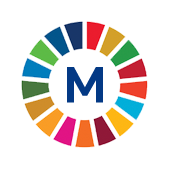 8.4.1 (12.2.1) Material footprintMetadataPeriod: AnnualYear: 2025 |
 8.4.1 (12.2.1) Material footprintMetadataPeriod: AnnualYear: 2025 |
| METADATA |
| Indicator information |
| Definition and methodology |
| Data source type and data collection method |
| ID of global indicator |
| Metadata update |
| Global metadata |
| Indicator information | Top |
| Indicator | |
8.4.1 (12.2.1) Material footprint | |
| Global indicator name | |
8.4.1 (12.2.1) Material footprint, material footprint per capita, and material footprint per GDP | |
| Target | |
8.4 Improve progressively, through 2030, global resource efficiency in consumption and production and endeavour to decouple economic growth from environmental degradation, in accordance with the 10‑Year Framework of Programmes on Sustainable Consumption and Production, with developed countries taking the lead | |
| Goal | |
Goal 8. Promote sustained, inclusive and sustainable economic growth, full and productive employment and decent work for all | |
| Definition and methodology | Top |
| Definition | |
Raw material consumption indicator (RMC): the amount of material in terms of RME needed (or, the amount of extraction, domestic and abroad, required directly and indirectly) to produce the products consumed in the geographical reference area. It is calculated as RMI minus exports in RME (calculated at the aggregate product level, by material). | |
| Methodological explanations | |
The material footprint, also referred to as raw material consumption (RMC), represents the global demand for the extraction of materials (minerals, metal ore, biomass, fossil energy materials) induced by consumption of goods and services within a geographical reference area. Data for material footprints stem from material flow accounts, which model the flows of natural resources from the environment into the economy. They include domestic extraction of materials measured in tonnes of gross material (for example, gross ore or gross harvest) as well as imports and exports measured by estimates of the raw material equivalents of the products traded (domestic and abroad extraction required to produce the traded products). RMC thus shows the amount of extraction needed to produce the goods demanded by final users in the geographical reference area, irrespective of where in the world the material extraction took place. | |
| Method of calculation | |
Material flow indicator [INDIC_ENV]: Domestic extraction (DE) | |
| Unit of measure | |
Thousand tonnes | |
| Available disaggregation | |
| Territorial level | |
Republic of Serbia | |
| Data source type and data collection method | Top |
| Data source | |
Statistical Office of the Republic of Serbia | |
| Periodicity of data collection | |
Annual | |
| ID of global indicator | Top |
C200202 | |
| Metadata update | Top |
| 21/8/2025 | |
| Global metadata | Top |
https://unstats.un.org/sdgs/metadata/files/Metadata-08-04-01.pdf | |